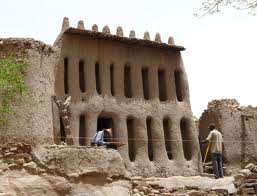Photo courtesy of wmf.org
Office of the Spokesperson
Department of State
Washington, DC
September 19, 2012
The Department of State is pleased to announce the extension of the
Agreement Between the Government of the United States of America and the
Government of the Republic of Mali Concerning the Imposition of Import
Restrictions on Archaeological Material from Mali from the Paleolithic
Era (Stone Age) to Approximately the Mid-Eighteenth Century, effective
September 19, 2012 for a period of five years, demonstrating America’s
commitment to antiquities preservation. This extension, consistent with a
recommendation made by the Cultural Property Advisory Committee,
represents a continuation of cooperation that began in 1993 with the
imposition of emergency U.S. import restrictions to staunch the pillage
of Mali’s rich archaeological heritage and the illicit trafficking in
such material.
The Government of the Republic of Mali requested this agreement under
Article 9 of the 1970 UNESCO Convention on the Means of Prohibiting and
Preventing the Illicit Import, Export and Transfer of Ownership of
Cultural Property. The Convention offers a framework of cooperation
among State Parties to reduce the further pillage of intact
archaeological sites; an activity that destroys information about past
cultures and places a nation’s cultural heritage in jeopardy. Sites in
the region of the Niger River Valley, for example, represent a continuum
of civilizations from the Neolithic period to the Colonial era, lending
archaeological significance to the region. Also included in the import
restriction is material from the Tellem burial caves of the Bandiagara
Cliffs as well as material found in the region of the Sahara Desert.
Restricted objects may enter the United States if accompanied by an
export permit issued by Mali or documentation verifying its provenance
prior to 1993 for archaeological material from the Niger River Valley
and the Tellem burial caves of Bandiagara, or prior to 2007 in the case
of archaeological material dating from the Paleolithic era to the
mid-eighteenth century from sites throughout the country, and if no
other applicable U.S. laws are violated.
The Designated List of restricted types of objects, published by
Customs and Border Patrol (CBP), and information about the Agreement can
be found at http://exchanges.state.gov/heritage/culprop/mlfact.html.
Subscribe to:
Post Comments (Atom)

No comments:
Post a Comment